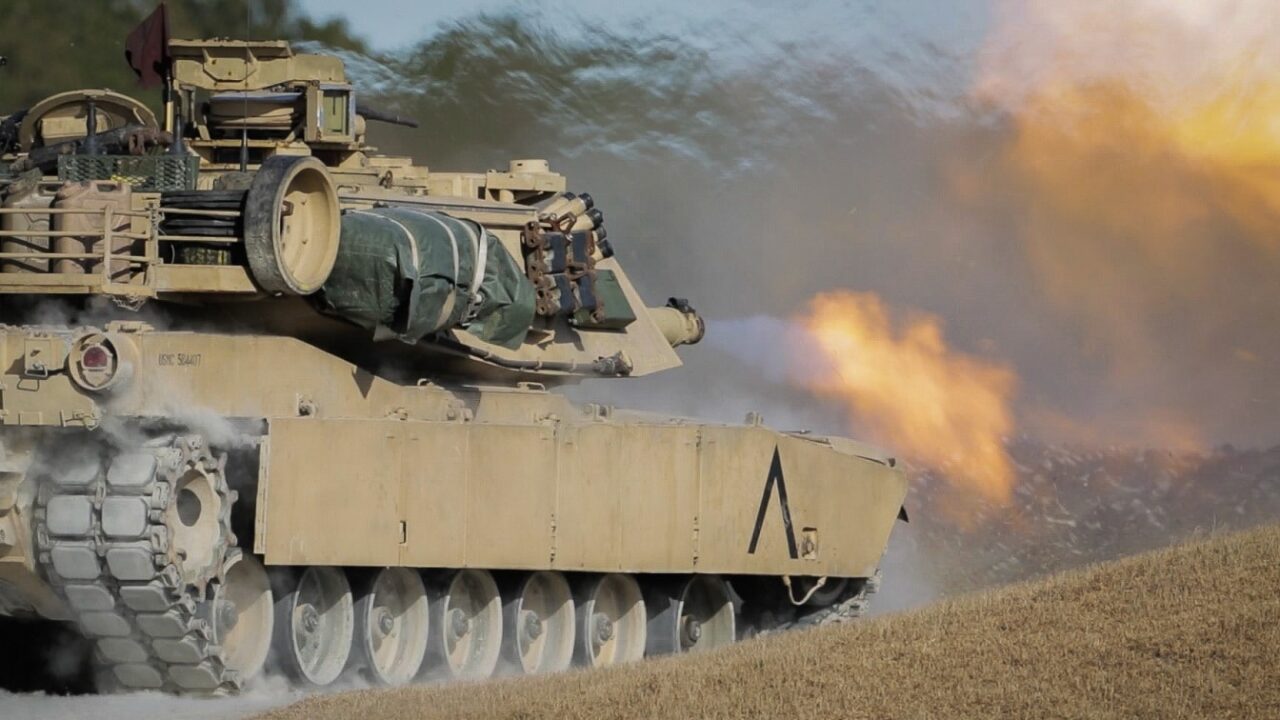Uranium Bullets: The US Tanks Have a Secret Weapon? Penetrating the armor of an enemy tank is the name of the game in tank warfare. The M1A2 Abrams main battle tank can fire a highly-accurate kinetic energy sabot round. This shell uses depleted uranium that can be deadly against any tank around the world, but the shells could cause health problems for soldiers and civilians who are exposed to potential radiation.
Why Depleted Uranium Rounds Are So Effective
The 120mm M829 depleted uranium shell packs a wallop when shot by the Abrams.
Nicknamed the “Silver Bullet,” during Operation Desert Storm, the M829 dominated the battlefield and took out numerous enemy tanks in that conflict.
It has different variants that have taken advantage of the Abrams upgrades over the years.
The M829 round has an electric primer, propellant, sabot projectile, and depleted uranium penetrator with fins and a tracer. The ballistic tip keeps the shot flat, so it doesn’t drop in the air.
The U.S. Army had previously used tungsten-tipped penetrators. They found that depleted uranium was tougher and heavier than the tungsten rounds.
The depleted uranium causes the round to burst into flames once it penetrates the armor of the targeted tank. M829 series (now upgraded to the M829A4 variant) can go through half a meter of armor at a range of over one mile.
The Silver Bullet Is Better in Tank-on-Tank Battles
However, the Silver Bullet is not that effective against other targets as the round goes straight through walls and buildings. It is more oriented to armored warfare.
For different targets such as structures, bunkers, and other emplacements, the Abrams is switching to the 120 mm Advanced Multi-Purpose (AMP) round. The AMP will take the place of the main high-explosive anti-tank shell and three other rounds such as the anti-personnel cannister and the obstacle reduction round. The AMP can take out an anti-tank missile team hiding behind a wall, for example.
Could It Hurt Friendly Soldiers and Non-combatants?
Depleted uranium rounds are not without controversy. Yes, they were highly effective during the First Gulf War, but some American soldiers breathed in uranium particulate that was annotated by a 2007 study in an environmental science journal. The study said that the uranium in the shells was radioactive and chemically damaging. It showed that there was a small likelihood of fatal cancer and temporary kidney damage.
But again, these were tiny chances of illness for those who were exposed on the battlefield. For example, if soldiers were around a destroyed tank that got lit up by a depleted uranium shell, they could have been exposed. A Stanford study in 2018, concluded that depleted uranium shells can have negative effects on human health with a danger of victims developing cancer of the kidneys and lungs.
The A-10 Warthog also used depleted uranium rounds in its 30mm cannon in Syria twice in 2015 against ISIS civilian trucks hauling oil. The Pentagon had previously said they would refrain from using depleted uranium shells in 2015 against civilians and that it warned the truck drivers to exit their vehicles via a leaflet drop.
Minimize the Danger to Civilians
Making sure that depleted uranium shells are only used against enemy tanks or armored vehicles is a prudent practice. Due to potential radiation exposure, there is a risk that noncombatants could develop health issues, even though the risk appears small, according to some scientific journals.
Depleted uranium rounds do appear to give the Abrams tank an advantage in armored warfare and they will probably become more advanced over time with more variants.
1945’s new Defense and National Security Editor, Brent M. Eastwood, PhD, is the author of Humans, Machines, and Data: Future Trends in Warfare. He is an Emerging Threats expert and former U.S. Army Infantry officer.

